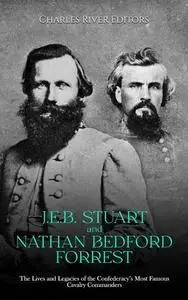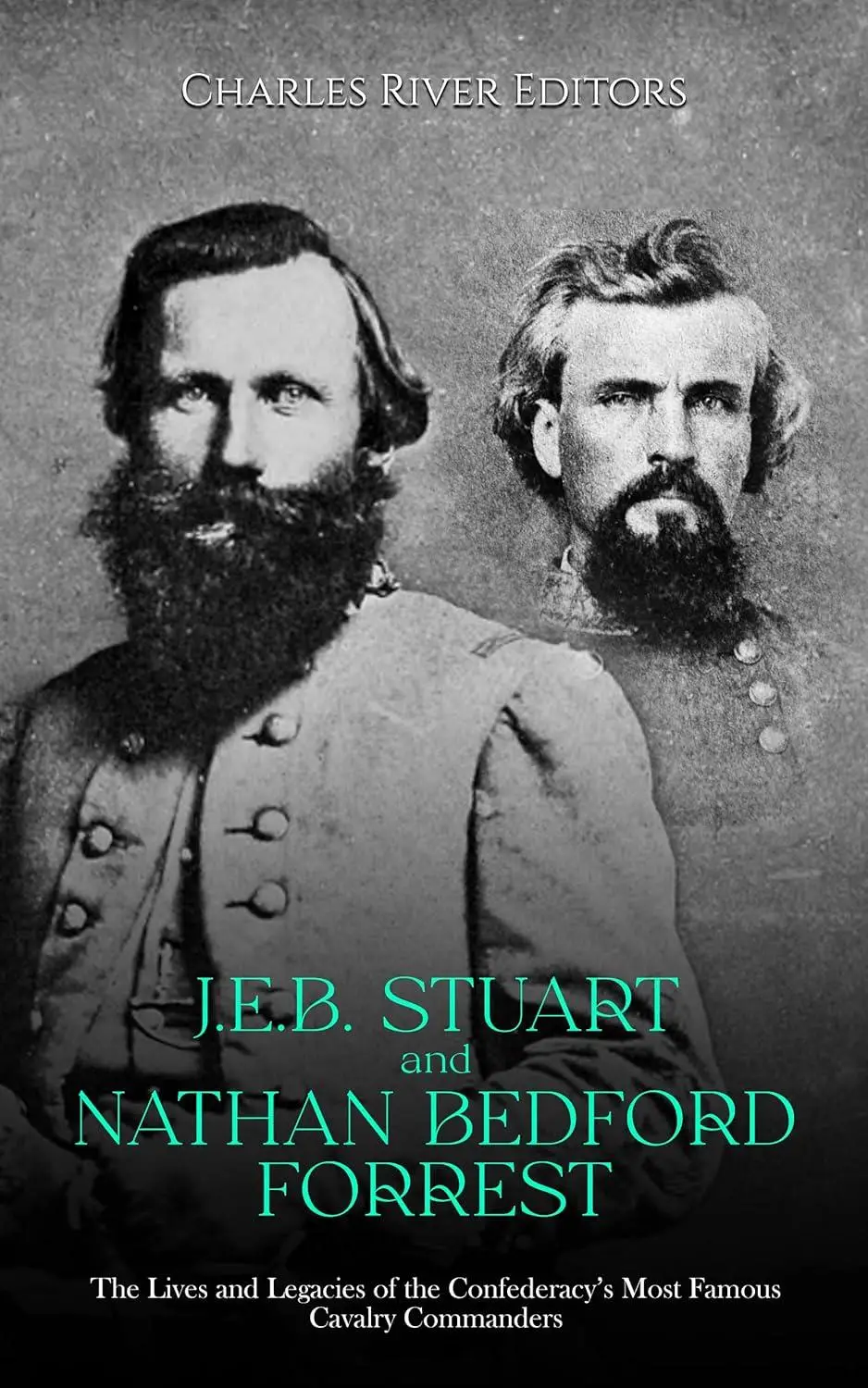J.E.B. Stuart and Nathan Bedford Forrest: The Lives and Legacies of the Confederacy’s Most Famous Cavalry Commanders by Charles River Editors
English | January 16, 2023 | ISBN: N/A | ASIN: B0BSJ2CB9Z | 185 pages | EPUB | 19 Mb
English | January 16, 2023 | ISBN: N/A | ASIN: B0BSJ2CB9Z | 185 pages | EPUB | 19 Mb
Despite the fact that the Civil War was fought nearly 150 years ago, it remains a polarizing topic for the country to this day. But among the most popular perceptions of the Civil War is the “Lost Cause”, which romanticized the war’s toughest and most famous fighters and continues to fuel the popularity of generals like Robert E. Lee.
Alongside Lee, no one epitomized the chivalry and heroism celebrated by the Lost Cause more than JEB Stuart (1833-1864), the most famous cavalry officer of the Civil War. Stuart was equal parts great and grandiose, leading the cavalry for the Confederacy in Lee’s Army of Northern Virginia until his death at the Battle of Yellow Tavern in May 1864. Stuart was a throwback to the past, colorfully dressing with capes, sashes, and an ostrich plumed hat, while sporting cologne and a heavy beard. But he was also brilliant in conducting reconnaissance, and he proved capable of leading both cavalry and infantry at battles like Chancellorsville. As the eyes and ears of Robert E. Lee's army, none were better, despite the fact that he was only in his late 20s and early 30s during the Civil War, far younger than most men of senior rank.
Nevertheless, Stuart’s tough fighting was and still is eclipsed by his reputation for audacious cavalry movements. He embarrassed the Army of the Potomac by riding around it twice, making him famous and embarrassing Union generals like George McClellan. However, Stuart’s role at Gettysburg was far more controversial. Given great discretion in his cavalry operations before the battle, Stuart’s cavalry was too far removed from the Army of Northern Virginia to warn Lee of the Army of the Potomac’s movements. Lee’s army inadvertently stumbled into the Union army at Gettysburg, walking blindly into what became the largest battle of the war.
When the war broke out, Nathan Bedford Forrest enlisted in the army and was instructed to raise a battalion of cavalry. A self-made man with no formal military training, Forrest spent the entire war fighting in the Western theater, becoming the only individual in the war to rise from the rank of Private to Lieutenant General. By the end of the war, Forrest was known throughout the South as the “Wizard of the Saddle,” and anecdotes of his prowess in battle were legendary. In addition to being injured multiple times in battle, Forrest has been credited with having killed 30 Union soldiers in combat and having 29 horses shot out from under him. Northerners weren’t the only ones who felt his wrath - Forrest famously feuded with several commanding officers and notoriously killed an artillery commander in his unit after a verbal confrontation spiraled out of control.
History has properly accorded Forrest his place as one of the most courageous soldiers of the Civil War, and Forrest attained a number of command successes in the Western theater of the war. But Forrest was also at the head of Confederate troops accused of massacring a Union garrison comprised mostly of black soldiers at Fort Pillow, and he was also a prominent slave trader, an overt racist, and likely a leader of the Ku Klux Klan after the Civil War. When he died in 1877, in part due to various war wounds, he was the nation’s most notorious unreconstructed rebel. Ashdown and Caudill, authors of The Myth of Nathan Bedford Forrest, write that the story of Forrest “embraces violence, race, realism, sectionalism, politics, reconciliation, and repentance.”
With these characteristics, it has proven almost impossible for any American to have a neutral view of Forrest, and it has been even harder to ignore him. Subsequently, Forrest’s image has vacillated from celebrated to reviled, sometimes both at the same time, over the last 150 years, as the numerous and notable aspects of Forrest’s life and legacy were considered by different people at different times.



